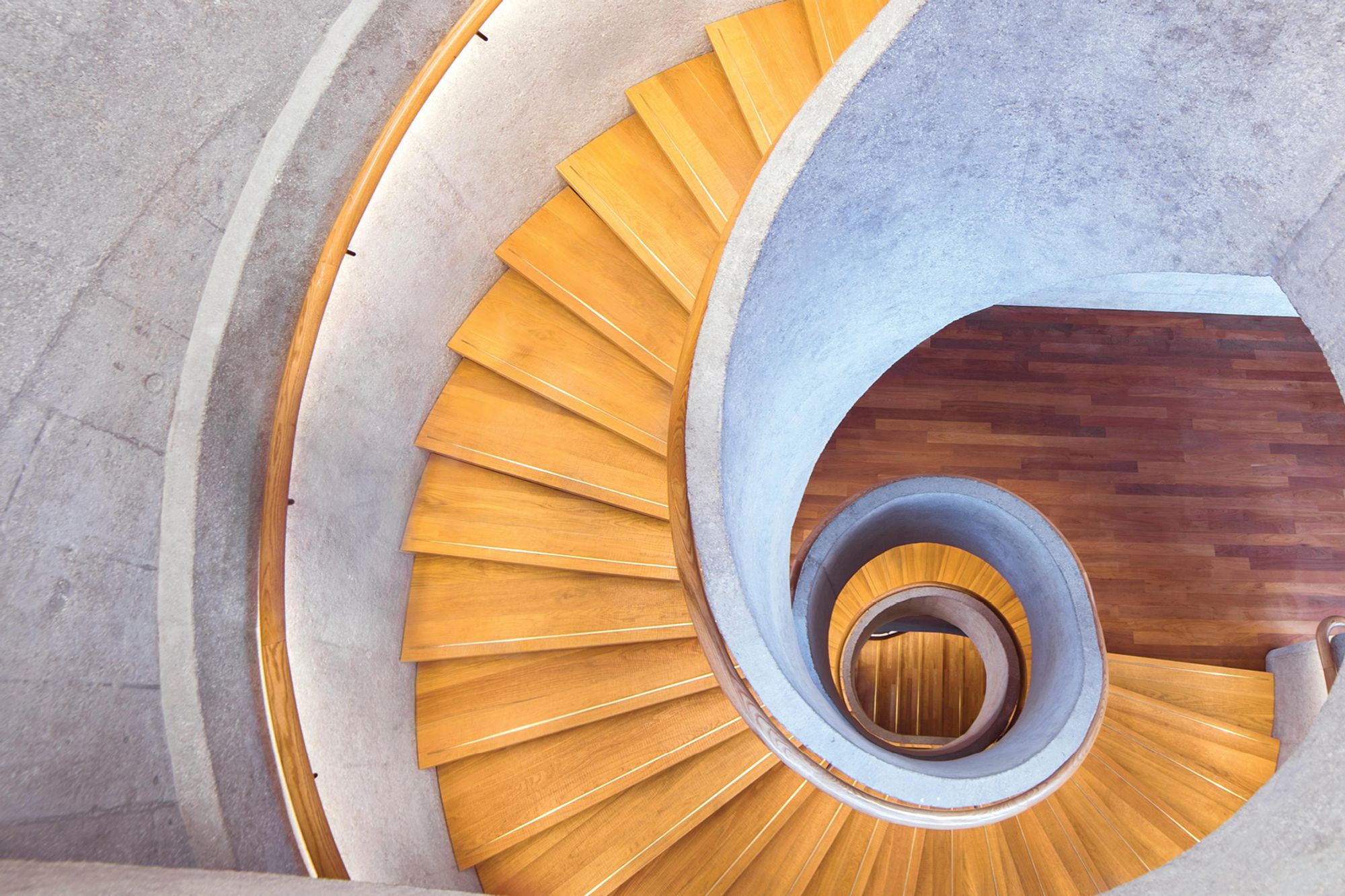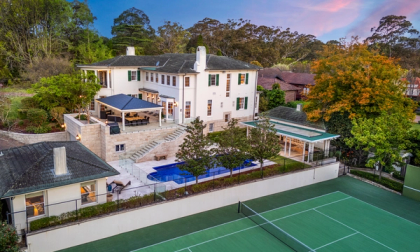
Famous Australian Architects
Who are the most famous Australian architects?
Trying to define Australian architecture collectively is a challenging task. Australia is incredibly multicultural, and its architectural styles are no exception.
At Dijones, we’ve seen dozens of structures and designs over the years inspired by regions as far ranging as North America, Asia, and Europe. But while all of these styles still hold influence today, we’ve also seen Australia’s own architectural style flourish in line with the nation’s unique cultural heritage and climatic needs.
Key to this change has been Australia’s visionary architects. For generations, the nation has hosted and produced innovative creatives who have introduced new ideas to address Australia’s challenges and provide new opportunities.
In this article, we’ll celebrate some of these architects, starting with the pioneers and icons before moving to the most exciting contemporary designers working to reshape Australia today.
But first, we need to explore what came before all this. Let’s explore how the Indigenous communities laid the foundation for modern Australian architecture.
What came before modern Australian architecture?
Around 50,000-65,000 years ago, the first Aboriginal people settled in what we now know as Australia. They brought unique architectural concepts in response to the country's hostile natural landscapes.
These Indigenous communities invented the humpy, also known as Gunyah, Goondie, or Wiltja. These arc-shaped structures were laced with spinifex or bark to provide shelter from the elements.

The Australian Gunyah, a bush hut made from bark and branches.
Image source: Survival & Bushcrafts
Other communities, like the Gunditjmara peoples, collected basalt rocks from Lake Condah to create early stone-based structures—using the materials available to them to their advantage.
On the surface, modern Australian architecture bears little resemblance to shelters like these. However, the designs of the Indigenous communities began a pattern that still lives on today: Creating structures that are in touch with Australia's natural landscapes.
Sadly, many examples of Indigenous architectural style were lost during British colonisation. But in the modern day, we’ve seen a promising resurgence in native art, and it has since become one of the most exciting architectural forms of the 20th century.
Early Australian architects
Defining the pioneers of modern Australian architecture is never straightforward because it is a mixture of designs and influences. That said, three pioneering architects stand out as especially influential.
Walter Burley (1876-1937) and Marion Mahony Griffin (1871-1961)
Before Harry Seidler and Phillip Cox, there were the Griffins, an American-born duo of urban designers who arrived in Australia after winning the Australian Government’s competition to create the city of Canberra in 1911.
The Griffins' concepts for Canberra became the benchmark for modern city design in Australia. The couple introduced intricate urban planning and blended the capital city's axial layout with Southeast Australia's natural landscapes.
Over the 28 years they spent in Australia, the Griffins designed over 350 buildings and infrastructure projects, including the suburb of Castlecrag in North Sydney and the Capitol Theatre Building in Melbourne.
While their trademark style isn’t as common today, the couple’s commitment to urban design and working with natural landscapes lives on in contemporary cities.

The Griffins’ Original Plans for Canberra, drawn up by Marion Mahony Griffin. Image source: Architectuul
Harry Norris (1888-1966)
Active primarily between the First and Second World Wars, Australian-born Harry Norris designed many of the now-iconic buildings in Melbourne's CBD, such as the Majorca Building, Nicholas Building, Block Court Arcade, and G.J. Coles Building.
Norris is credited as a pioneer of Art Deco architecture in Melbourne—a style the city is still well-known for today. He was one of the earliest to prove that commercial buildings could be both modernised, economical, and beautiful.
Over his long career, Norris designed over twenty beautiful buildings in central Melbourne. His work still turns heads today.

The Nicholas Building, designed by Norris in 1926.
Image source: TimeOut
Iconic Australian architects
Next, there are the most iconic architects of all time in Australia. These are the architects who have, in some form, defined and redefined modern Australian architecture over the last century.
Glenn Murcutt
No Australian architect has a global reputation as widespread as Glenn Murcutt’s. The multiple award-winning designer is widely considered Australia’s most famous architect, and for good reason.
Over his five-decade career, he has designed several of Australia’s most iconic homes and urban projects. He is also the only Australian architect to win the prestigious Pritzker Prize.

Glenn Murcutt.
Image source: ThoughtCo.
Murcutt is famed for his environmentally conscious and socially responsible designs. He takes inspiration from the Aboriginal people's connection to the natural world by choosing local materials to minimise his impact. His work is both sustainable and visually stunning.
His notable buildings include Simpson-Lee House, the Australian Islamic Centre, and Magney House, for which he won the Robin Boyd Award in 1985.
While Murcutt is still active today, he is famously selective when deciding on projects and will only choose those that align with his environmental and social values.

The Australian Islamic Centre, designed by Glenn Murcutt in 2018.
Image source: The Guardian
Harry Seidler
It would be impossible to list Australia’s iconic architects without talking about Harry Seidler. This Austrian-Australian designer is noted for introducing the Bauhaus style to Australian architecture.
After spending years studying the Bauhaus style in America, Seidler began life in Australia in 1948 by building a modest home in Wahroonga for his mother, Rose. This home (now known as the Rose Seidler House) single-handedly introduced the Bauhaus concept to Australia. The public took notice, and Seidler’s career took flight.

Harry Seidler.
Image source: Dwell Magazine
Over his six-decade career, Seidler designed over 180 commercial, residential and public buildings in Australia. Some of his notable works include The Horizon, Grosvenor Place, Australia Square, and the MLC Centre.
Seidler’s style constantly evolved over his career. He began working with timber, then moved to concrete and eventually steel. It is this evolution that kept him at the forefront of his profession until he died in 2006.

Harry Seidler’s Horizon Apartments, completed in 1998.
Image source: Sydney Morning Herald
Brit Andresen
Brit Andresen paved the way for women in architecture when, in 2002, she became the first female recipient of the Australian Institute of Architects Gold Medal—the highest individual award for Australian architects.
After spending much of her childhood in Australia, the Norwegian-born architect returned in 1977 to begin teaching at the University of Queensland. In 1980, she married fellow architect Peter O'Gorman and established her current practice, Andresen O'Gorman Architects, which focuses on residential buildings using native Australian Hardwood trees.

Brit Andresen.
Image source: University of Queensland
Andresen prioritises sustainable design and explores the intersection between built environments and the natural world within her work. Her most famous buildings in Queensland include Mount Nebo House, Rosebery House, Ocean View Farmhouse and Mooloomba House.
Aside from her architectural practice, Andresen was also a teacher at the University of Queensland for 33 years until her retirement in 2011. It is for this lifelong dedication to Australian Architecture that she won her architectural gold medal and is now recognised as one of the most valuable Australian architects of all time.

Mooloomba House, designed by Brit Andresen in 1995.
Source: Ozetecture
Phillip Cox
Few modern architects have a repertoire quite as diverse as Phillip Cox. After studying at the University of Sydney and the University of New South Wales, Cox founded COX Architecture in 1967. The firm has now grown into one of the biggest and most renowned in Australia.
Cox's ambition has always been to design and create architecture that is distinctly Australian. He is well-known for designing large-scale structures that blend beautiful designs with seemingly impossible feats of engineering.

Philip Cox.
Image source: Australian Design Review
COX Architecture has designed dozens of outstanding structures over the last 57 years, including the Albany Entertainment Centre, Sydney Exhibition Centre, Australian National Maritime Museum, and AAMI Park in Melbourne. In honour of his achievements, he was appointed an Officer of the Order of Australia in 1988.

Albany Entertainment Centre, designed by Philip Cox.
Source: Indesign Live
Jørn Utzon
While not an Australian architect, this list would be incomplete if we didn't mention Jørn Utzon, the legendary designer of the Sydney Opera House.
Much like the Griffins in the decades prior, Danish architect Utzon won an international competition to design the Opera House in 1957. His imaginative designs didn’t translate well to the building process. Problems arose with structural integrity, and it took a whole sixteen years to complete the project.

Jørn Utzon.
Image source: The Independent
Despite this, Utzon has to be credited for his sheer creativity. While he had a rocky relationship with Australia over his lifetime—he famously left the country in the 1960s as costs began to rise—it's of little doubt that his genius created the most memorable landmark in all of Australia.

Sydney Opera House, conceived by Jørn Utzon in 1957.
Image source: Architectural Digest
Contemporary Australian architects
The most striking development over the last 50 years has been Australia’s embrace of its multicultural identity. Contemporary architects now design projects with careful consideration of the country’s vibrant history, using light, landscape, and local materials to create designs that are at once practical, sustainable, and stunning.
To show you how Australian architecture is evolving, let’s explore some of the established and emerging designers that are shaping Australia’s national identity.
Georgia Singleton
Georgia Singleton studied Architecture at the University of Western Australia before becoming the Director of Woods Bagot in Sydney. The firm consistently ranks among the best in the world, and Singleton is credited with putting Australia on the global map of contemporary architecture.
The firm’s most iconic works include the University of Sydney Business School, The Amberly, and Short Lane.

University of Sydney Business School, designed by Woods Bagot.
Image source: Woods Bagot
Kerstin Thompson
Kerstin Thompson’s Melbourne-based firm, Kerstin Thompson Architects, has quickly risen to become one of the country's most exciting and innovative household names.
The firm's primary goal is to explore how architecture can respond to local conditions to positively support communities.
Notable works include the Monash University Museum of Art, the House at Lake Connewarre, and the Queen and Collins Street Development, for which Thompson won the Melbourne Architecture Prize in 2022.

The Queen and Collins development, designed by Kerstin Thompson.
Image source: KTA
John Wardle
Since founding John Wardle Architects in 1986, Wardle has designed numerous residential properties, public areas, university buildings and large commercial spaces.
Wardle is one of the biggest proponents for sustainable and socially responsible architecture in Australia today. He is the benchmark for how to use recycled materials and an expert in creating spaces that are, above all, functional. His famous projects include the Melbourne School of Design, Phoenix Central Park, and Cradle Coast Campus.

Phoenix Central Park Gallery, designed by John Wardle.
Image source: ArchDaily
Jefa Greenaway
As an Australian-born Indigenous architect, Jefa Greenaway champions architecture that allows Indigenous communities to explore and express their cultural heritage. His style prioritises sustainability and cultural sensitivity.
One of his works, the Lowitja Institute, is a research centre that promotes Aboriginal and Torres Strait Islander ideas. Another, the Koorie Heritage Trust, is an art centre for Aboriginal and Koorie artefacts.
Greenaway's work celebrates Indigenous architecture and allows Indigenous communities to express themselves, making him one of the most inspiring Australian architects working today.

Koorie Heritage Trust, designed by Jefa Greenaway.
Image source: Japingka Aboriginal Art
The future of Australian architecture
Despite new developments and innovations, architects will always need to design buildings that respect Australia's diverse (and often unforgiving) landscapes. With the threat of climate change growing, architectural sustainability will continue to be the most important consideration for any budding architect.
Aside from this, innovation amidst urbanisation will be a key concern over the next century. With 67% of Australia’s growing population living in capital cities, architects must find new ways to create ergonomic designs without impeding quality of life.
One thing that can help with this is technology. Artificial intelligence as a tool for urban planning is already in play in cities like Darwin and Melbourne. The goal is to streamline every aspect of city design to create more efficient, innovative communities country-wide.
Striking the balance between efficient urban planning, environmental responsibility, and cultural identity will define Australia over the coming years. However, as evidenced by the exciting number of brilliant contemporary architects in Australia today, it’s clear the nation is up for the challenge.
Frequently asked questions
See our most frequently asked questions about Australia’s architecture.
How has Australian architecture responded to climate change?
Environmental responsibility has long been a concern for Australia's architects, but over the last decade, a greater number have begun to move toward sustainable designs.
Many now use locally sourced materials and create structures that blend seamlessly with the natural environment. Some also integrate renewable energy sources and natural ventilation directly into their structures.
What are the biggest challenges facing young architects in Australia today?
Budding Australian architects have a lot to juggle. They must innovate and find new ways to promote Australia's unique cultural identity, but also have to think sustainably and remain aware of urbanisation. It's a tightrope that requires skill to walk.
How does Australian architecture compare to other countries in terms of innovation and sustainability?
Australian architecture stands out globally for its innovation. This is largely the result of Australia’s unforgiving natural climate. Arid deserts and tropical rainforests mean architects must be thoughtful with their designs, and the impact of global warming has never been more apparent in the country, meaning sustainability is a necessity.
The bottom line
Australian architecture has changed both a lot and a little over the years.
We’ve seen urban planning revolutionised, the introduction of Art Deco and Bauhaus, impossible feats of engineering, and the reintroduction of Indigenous architecture.
And yet, through all of that, one thing has remained constant. From the Indigenous communities and the Griffins right through to the contemporary architecture firms in Australia today, the need to work alongside the natural world has always been, and will always be, front and centre.
Did we miss an architect? If you have any questions about this article, connect with us today. If you’re interested in Australia’s current innovation, take a look at our selection of contemporary residential architecture.
Was this content helpful to you?





